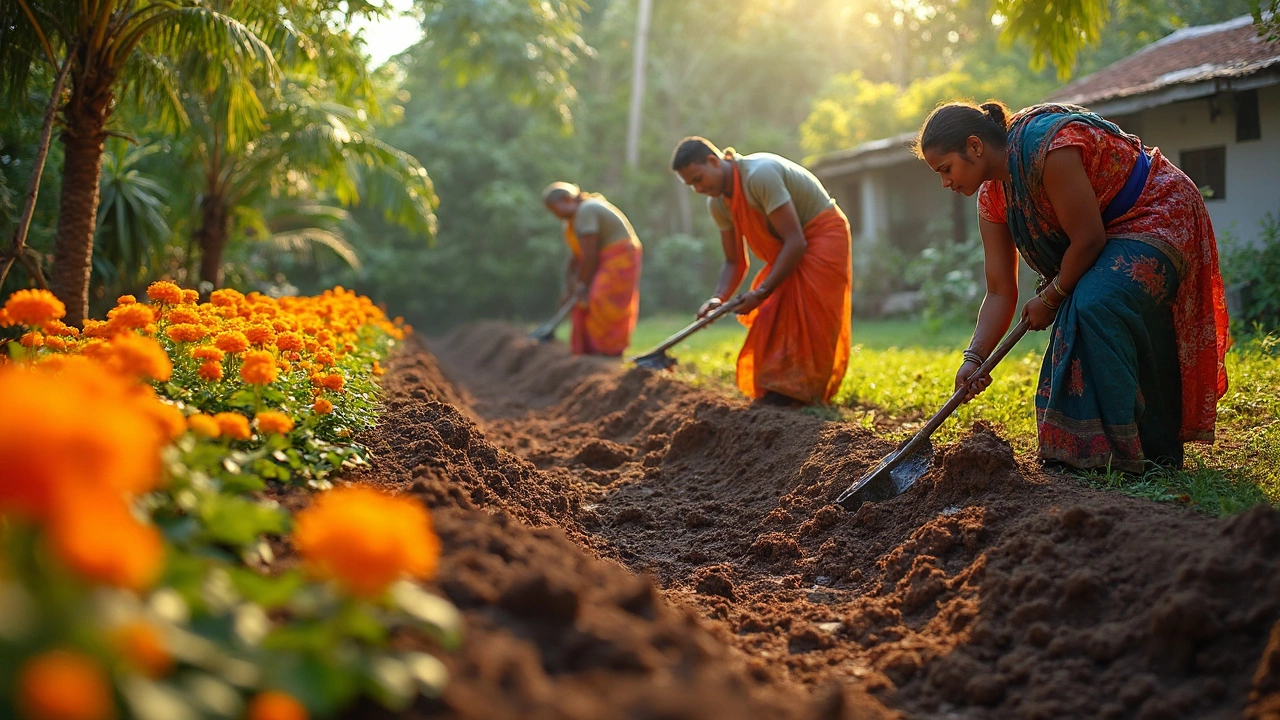Curious about which tool can help you remove the top layer of soil fast, safely, and efficiently? This guide digs deep into the best tools for stripping away topsoil, from manual spades to modern machines. Explore pro tips, clever techniques, and real-world examples from gardens and construction sites. Learn which tool might save you hours of work—or give you a new appreciation for a classic shovel. Get the information you need to pick the right soil removal tool for your project.
Soil Removal Tool: Best Picks and How to Use Them for Indian Gardens
When you’re dealing with soil removal tool, a handheld or powered device designed to dig, lift, or shift soil efficiently. Also known as digging tool, it’s not just about moving dirt—it’s about making your garden work for you, not against you. In India, where soil ranges from sticky clay in the south to rocky loam in the north, using the wrong tool can turn a simple task into a back-breaking chore. A good soil removal tool doesn’t just remove soil—it transforms how you interact with your land.
What you need depends on your soil type and scale. If you’re breaking up hard-packed earth for a new vegetable bed, a spade, a flat-bladed tool for slicing through roots and lifting soil is your best bet. For loosening dense clay without tearing your hands up, a garden fork, a four-tined tool that aerates and lifts soil with less effort beats a shovel every time. And if you’re cleaning out a raised bed or removing excess soil from around potted plants, a hand trowel, a small, handheld tool for precise digging and transplanting is the quiet hero of daily gardening. These aren’t just tools—they’re extensions of your hands, designed to work with nature, not fight it.
Many gardeners in India skip this step and use whatever’s lying around—a broken hoe, a rusty bucket, even a kitchen spatula. But that’s like trying to hammer a nail with a book. The right soil removal tool saves hours, prevents injury, and protects your plants’ roots. A heavy-duty spade with a sharp edge cuts through compacted soil faster than a dull one. A fork with curved tines lifts clumps without scattering them. A lightweight trowel with an ergonomic grip lets you work longer without cramps. These details matter, especially when you’re doing this every week during planting season.
And don’t forget maintenance. A soil removal tool isn’t a one-time buy—it’s an investment. Keep blades sharp, wooden handles oiled, and metal parts dry. A rusted fork won’t dig—it’ll just tear. A chipped spade won’t slice—it’ll just bruise the soil. Simple care means your tools last years, not months. And in a place where monsoons turn gardens into mud pits, having reliable gear isn’t luxury—it’s survival.
Below, you’ll find real advice from gardeners who’ve been there: which tools actually made their jobs easier, what to avoid in Indian conditions, and how to pick the right one without spending a fortune. Whether you’re clearing weeds from a balcony planter or turning over soil for a kitchen garden, the right tool changes everything.
